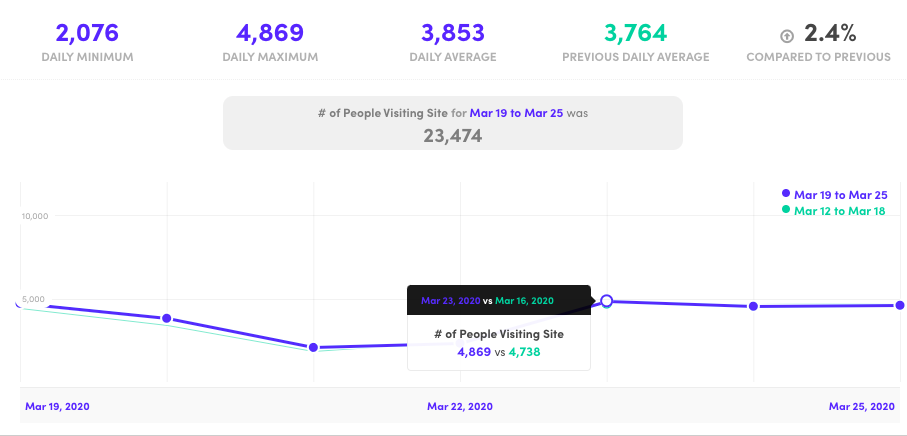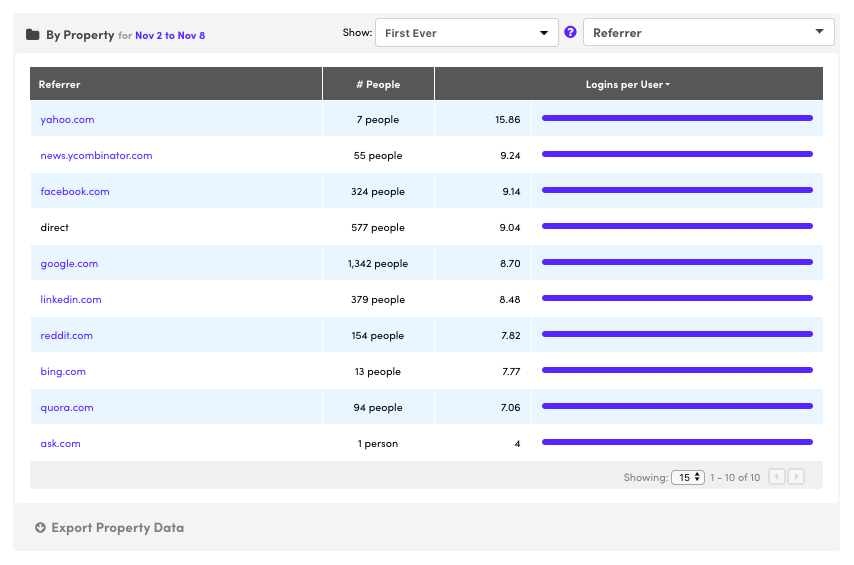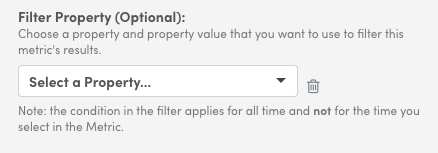Metrics
The Metrics tool is a quick way to visualize the performance of individual events or properties.
Dashboard
The dashboard is a quick look at the health of your site, through the lens of your metrics. Values on the dashboard update roughly every 24 hours, but you can dive into an individual metric to get the most up-to-date number. If we detect that your metrics haven’t updated in a while, we’ll also try to update all of your metrics.

Individual Metric Details
Clicking into an individual metric gives you visibility on the metric’s performance over time, as well as maximum, minimum, and averages.

That “Overall Signup Conversion Rate” value in the center of your metric is calculated on-the-fly each time and will show the most up-to-date value.
Histogram
For some of our metrics, we provide a histogram of the distribution, so you can visually gauge if outliers are affecting the calculation. You can toggle between this histogram view and viewing the individual raw data.

The histogram is visible in these metrics:
- Number of Times Event Happened
- Average Number of Times Event Happened Per Person
- Average Time Between Events
- Total Value for Property
- Average Value for Property
Segmenting a Metric
At the bottom of each metric, you can segment your metric along any of your Kissmetrics properties. Example uses include:
- Gauge performance of a metric based on which referring site or ad campaign each visitor came from
- Gauge how well a particular A/B test performed in each test condition

Remember that we track a person’s lifecycle on your site, which includes every referral source they took to reach your site. Choosing First ever or Last ever lets you attribute a person to either the first property they received (usually for Referrer or Campaign Name), or to the most recent property.
Adding a Filter to a Metric

You can add a single property filter to a metric when you create or edit a metric. Filtering allows you to set a Metric to a specific population or subset of your users. The filter will look for whether a person had that property and value at any time in their lifetime.
Data for a filtered Metric will show on the Metrics Dashboard as well as the Metrics Details page (line graph, histogram where applicable, and property table)
Filters allow you to have multiple metrics that report the same metric but for different segments of your users.
Examples:
- Number of Visits from people who have Campaign Source that contains ‘Google’
- Number of Visits from people who have Campaign Source that equals ‘Facebook’
- Conversion Rate from Visit to Sign Up for people who have Campaign Medium that contains ‘Email’
- Conversion Rate from Visit to Sign Up for people who have Campaign Medium that contains ‘Social’
Metrics filtering does not currently support Channel, Channel: Origin, or Origin properties. In order to accomplish the same filter, you can currently configure the filter to say Campaign Medium contains ‘email’ (or CPC, organic, direct, social, referral) depending on how you have set up your UTM parameters.
Updated 7 months ago
